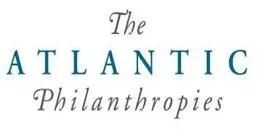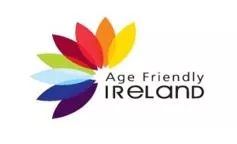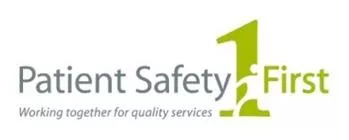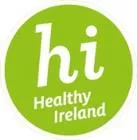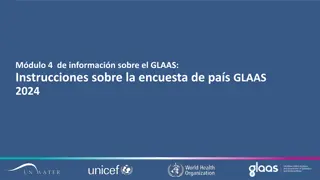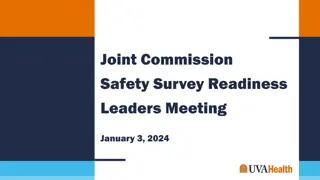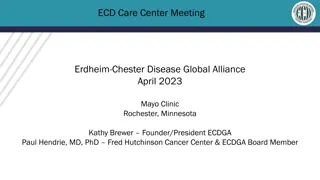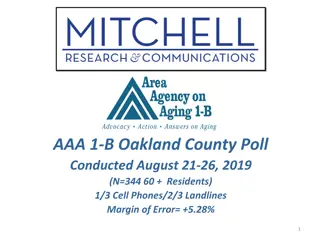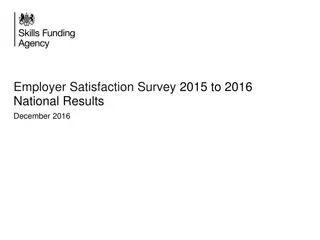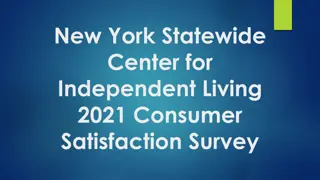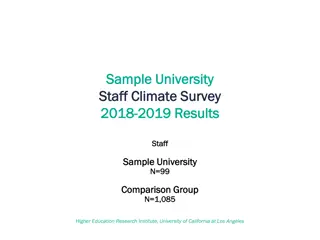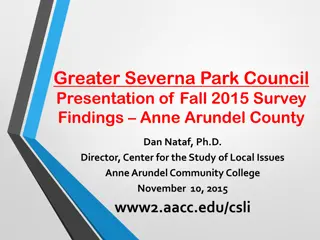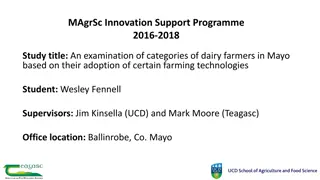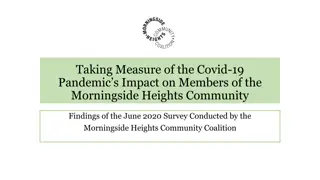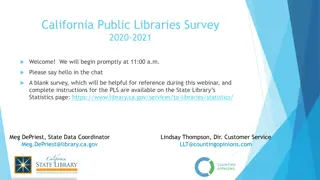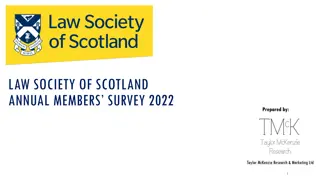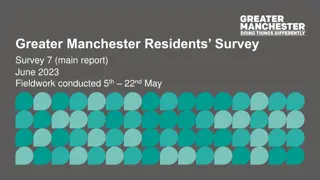Mayo Key Issues Findings from HaPAI/AFCC Survey Overview
The Healthy and Positive Ageing Initiative (HaPAI) is a research program led by the Department of Health in collaboration with other organizations to assess and promote positive ageing. The initiative aims to increase awareness, provide a framework for action, and develop local indicators to improve health and wellbeing for older people. A survey conducted in 21 areas gathered data from over 10,000 participants aged 55+ using random sampling techniques. The survey overview explains the importance of random sampling in obtaining representative data for analysis.
Download Presentation

Please find below an Image/Link to download the presentation.
The content on the website is provided AS IS for your information and personal use only. It may not be sold, licensed, or shared on other websites without obtaining consent from the author. Download presentation by click this link. If you encounter any issues during the download, it is possible that the publisher has removed the file from their server.
E N D
Presentation Transcript
Mayo - Key Issues Findings from the HaPAI/AFCC Survey, Sinead Shannon, Healthy and Positive Ageing Initiative, Department of Health.
Overview | HaPAI The Healthy and Positive Ageing Initiative (HaPAI) is a joint research initiative, led by the Department of Health, with the HSE, Age Friendly Ireland and the Atlantic Philanthropies. National Positive Ageing Indicators and Research Local Positive Ageing Indicators and Research HaPAI Research and Knowledge Dissemination 2
HaPAI | Objectives The Initiative was established to be a programme for assessing and communicating the progress towards Positive Ageing The Healthy and Positive Ageing Initiative (HaPAI) is a joint research initiative, led by the Department of Health, with the HSE, Age Friendly Ireland and the Atlantic Philanthropies. Increasing knowledge and greater awareness of the areas in which additional change or action is required; A Framework to help partners in wider government and society prioritise actions towards improving health and wellbeing for Older People; Development of local indicators to show the impact of the local environment on the health and wellbeing of older people, and to stimulate local action by stakeholders in Age Friendly Cities and Counties 3
Survey Overview Collected in 2015- 2016 21 Local Authority areas 10,500 participants (500 per area) Participants aged 55+ living in their own homes Cavan Mayo Louth Meath Fingal Dublin city South Dublin Dun Laoghaire Rathdown GALWAY City and Co Computer-assistant personal interview technique Kildare Laois Population representative Clare Wicklow Kilkenny Survey weights match the sample to the Census Limerick City & Co Tipperary Wexford Quantitative results CORK City & County 4
Survey research overview What is a random sample survey? Uses a sample from large populations. Everyone in the target population has an equal chance of being selected A systematic method is followed to ensure that bias is avoided in the choice of survey participants It is often believed that a random sample will be representative of the population. However a random sample might, by chance, turn out to be anything but representative. For example, it is possible (though unlikely) that if you toss a fair die ten times, all the tosses will come up six. Why Is Random Sampling Important? While it is true that sampling randomly will eliminate systematic bias, the main reason for using random sampling is because the statistical procedures used to analyse the data are only reliable with random samples. 5
HaPAI survey: representativeness Survey weights Some people are less likely to take part in surveys e.g. much older adults, men, people with lower levels of education, people currently at work. Some people are more likely to take part e.g. younger people, retired people. The sample can be weighted so that it resembles the population from which it was drawn Weighting involves a process of using statistics to assign more or less weight to some groups than others so that the sample characteristics correspond more closely to the population 6
Mapping NPAS to WHO AFCC domains NPAS Goals and Action areas WHO Domain Employment and retirement Volunteering Cultural and social participation Transport Civic Participation Participation Social Participation Transport Healthy ageing; disability; chronic disease; health behaviours and lifestyle Healthy Ageing Health Services; accessible and high quality Community Support and Health Services Carers; Housing Age Friendly built environment Crime and Safety Elder Abuse Financial security Housing Outdoor Spaces and Buildings Security Cross-cutting Objective Cross-Cutting Objective Improving Information provision Communication and Information - Combatting Ageism Respect and Social Inclusion - 7
Survey Questions Access to essential and social services Respondents were asked to give their views on their access to services within the local area. Local was defined as meaning anything within a 10-15 minute walk from their home. Access was defined as meaning how easy it is to get there, including transport, distance, opening hours etc The options given were; with great difficulty; with some difficulty; easily; very easily; service not used; service not available in my local area Essential Services Social Services Postal services (eg post office, post-box) cafes and restaurants Full banking services recreational park or green area Public transport Public libraries Supermarkets or other shops community centre or other venue where you can meet friends Local Health services (GP, pharmacy etc) cinema or other entertainment sites Local Gardai/Garda station 8
Great or some difficulty accessing essential services Great difficulty % Some difficulty % Mayo 6.3 16.2 Dub Fingal 7.2 17.3 Dub Sth 7.1 19.4 Dub City 7.7 19.7 Louth 4.2 24.5 Meath 10.5 23.6 Wicklow 15.2 20.3 Tipp 11.4 25.5 Galway City 12.8 25.9 Clare 11.6 27.9 Limk City 5.4 34.6 Total 15.4 25.1 Cork City 10.9 33.2 Wexford 21.7 23.5 Kildare 18.5 28.1 Laois 18.1 28.7 Kilkenny 17.7 29.5 Cavan 21.5 30.8 Galway Co 24.4 29.1 DLR 18.1 36.9 Cork Co 30.4 25.1 Limk Co 36.9 29.5 0 10 20 30 40 50 60 70 9
Great or some difficulty accessing services by age group in Mayo (%) 17.1 Supermarkets or other shops 8.4 17.8 Postal services 7.3 7.2 Recreational park or green area 3.8 10 Community centre or other venue where you can meet friends 6.3 16.7 Local Health services 7.5 17.1 Cafes and Restaurants 8.2 18.5 Full banking services 11.5 17.5 Public transport 13.3 10.7 Public Library 4.8 9.4 Cinema or other entertainment 7.6 9.4 Local Gardai/Garda station 7.2 0 2 4 6 8 10 12 14 16 18 20 Age 70+ % Age 55-69 %
Great or some difficulty accessing services % 13.3 Supermarkets or other shops 12.1 13.8 Postal services 11.8 11.3 Recreational park or green area 5.3 10.4 Community centre or other venue where you can meet friends 7.9 14 Local Health services 11.4 13.8 Cafes and Restaurants 12 21.7 Full banking services 14.6 16.2 Public transport 15.1 12.8 Public Library 7.4 17.9 Cinema or other entertainment 8.3 25.6 Local Gardai/Garda station 8.2 0 5 10 15 20 25 30 Total others Total Mayo %
Percentage who say services are not available 3.6 Supermarkets or other shops 16.4 4.3 Postal services 16.6 11.1 Recreational park or green area 18.6 7.1 Community centre or other venue where you can 19.7 7 Local Health services 21 8.7 Cafes and Restaurants 21.3 12.5 Full banking services 26.6 11.2 Public transport 27 14.3 Public Library 31.9 22.3 Cinema or other entertainment 34.2 11.5 Local Gardai/Garda station 42.2 0 5 10 15 20 25 30 35 40 45 Total Mayo
Services not available Public Library % Local Garda/Garda station % 45 38 41 40 33 36 3131 35 28 30 25 26 25 18 2019 16161614 20 17 151514 12 15 1211 109 10 10 7 54 4 5 5 54 43 3 3 2 5 2 21 0 0 0 DFI KK Total KD DSO DCY WX WW MEA CLA LCI COCO GCO GCY COCY MO LCO TIP DLR CVN LOU LAO DFI KK Total KD DCY DSO WX CLA GCO WW MEA LCI GCY MO COCO COCY LCO TIP DLR CVN LOU LAO 13
Difficulty accessing full banking services With great difficulty % With some difficulty % 14.4 26.1 LIMK CO. 13.9 20.2 WEXFORD 13.1 28 GALWAY CO. 10.5 23.9 CORK CO. 8.9 18.4 KILDARE 8.8 13.8 WICKLOW 8.2 21.6 DLR 8 17.9 KILKENNY 7.3 25.6 CAVAN 6.8 18.1 TOTAL 5.8 13.7 MAYO 5.8 17.3 MEATH 5.7 12.6 DUB CITY 4.6 9.7 LAOIS 4 22.7 CLARE 3.8 13.9 DUB STH 3.5 27.4 CORK CITY 3.2 18 TIPP 3.2 18.1 GALWAY CITY 2.8 9.8 DUB FINGAL 2.2 13.9 LOUTH 1.8 9.7 LIMK CITY 14
Difficulty accessing social services by county Great difficulty % Some difficulty % 4 11.6 MAYO 4.5 13.2 DUB FINGAL 4.5 14.4 LOUTH 7.2 14.5 LAOIS 5 17.5 KILKENNY 6 17.5 DUB CITY 7.1 18.7 DUB STH 8 19.3 CAVAN 7.1 20.6 TIPP 9.7 19.8 MEATH 9.5 21.3 TOTAL 2.3 29.1 LIMK CITY 15.6 16.2 WEXFORD 6 25.8 GALWAY CITY 6 26.8 CLARE 11.8 22.1 GALWAY CO 13.3 21 WICKLOW 10.5 26.7 CORK CITY 14.1 25.1 CORK CO 11.3 30.4 KILDARE 18.9 27.5 LIMK CO 16.1 30.4 DLR 15
Survey Questions Built Environment Respondents were asked to describe their satisfaction level with various aspects of the built environment. Options included a range from very dissatisfied to very satisfied The number of pedestrian crossings and traffic lights The timing of pedestrian crossings and traffic lights The availability of seats or resting places the availability or effectiveness of traffic calming measures in your locality (traffic calming defined as; changes in the road layout and speed limits designed to slow down the traffic) the general appearance and upkeep (eg litter or graffiti) the quality and continuity of paths or pavements the availability of accessible toilets 16
Dissatisfaction with aspects of the built environment 90.0 Availability of accessible toilets 63.7 47.8 Quality and continuity of paths or pavements 28.7 1.7 General appearance and upkeep 13.3 55.5 Traffic calming measures 33.1 49.2 Availability of seats or resting places 43.3 54.8 Timing of pedestrian crossings and traffic lights 20.6 52.4 Number of pedestrian crossings and traffic lights 22.4 0 10 20 30 40 50 60 70 80 90 100 Mayo Total
Dissatisfied with the availability of accessible toilets Mayo 90 Wexford 80 Dub City 78.4 Meath 68.6 Limk City 68.3 DLR 68.3 Dub Fingal 67 Clare 64.9 Kildare 64.8 Louth 64.7 Limk Co 63.8 Total 63.7 Cavan 63 Galway City 61.9 Cork Co 59.2 Laois 57 Wicklow 56 Galway Co 52.3 Kilkenny 50.3 Dub Sth 46.6 Tipp 45.6 Cork City 43.9 0 10 20 30 40 50 60 70 80 90 100 18
Dissatisfied with the general appearance and upkeep Dub City 26.1 Cork City 18.3 Wicklow 17.7 Tipp 17.2 Laois 16.1 Dub Fingal 16.1 Wexford 15.9 Kildare 13.9 Galway Co 13.4 Total 13.3 Cavan 11.7 Meath 11.6 Dub Sth 11.5 Louth 10.5 Galway 10.5 Kilkenny 10 DLR 9.2 Clare 8.1 Limk Co 6.7 Cork Co 6.3 Limk City 6.1 Mayo 1.6 0 5 10 15 20 25 30 19
Neighbourhood satisfaction by area Like it a lot % 99 97 95 94 93 93 92 91 90 90 89 88 87 87 86 85 84 84 84 79 79 78 20
How difficult is it for you to walk a quarter of a mile? Wicklow 10 7 21 Dub Sth 10 3 0 Cork City 16 8 1 DLR 10 7 2 Cork Co 14 11 5 Mayo 16 13 5 Wexford 19 12 6 Limk Co 15 14 4 Louth 11 5 2 Total 13 8 4 Kildare 9 11 1 Dub Fingal 11 4 2 Tipp 12 7 3 Cavan 14 9 3 Galway Co 18 7 6 Meath 10 7 2 Dub City 16 7 1 Limk City 11 10 4 Laois 9 8 1 Clare 10 6 5 Kilkenny 9 8 2 Galway City 10 7 3 0 5 10 15 20 25 30 35 40 45 A little difficult % Very difficult % Not possible/relevant % 21
Survey Questions Transportation Respondents were asked what mode of transport they had used within the past week. They were given a broad range of options to choose from did you drive yourself? were you driven as a passenger? did you use a public bus (city)? did you use a public bus (intercity)? did you use a public bus (rural)? did you use a taxi / hackney? did you use the train (commuter)? did you use the Dart / Luas? did you use the train (intercity)? did you use the rural transport scheme? 22
Transport Difficulties and Driving 70.5% of Mayo people had driven themselves in the previous week 81.9% 55.7% Aged 70+ Aged 55-69 In the full sample, people who had not driven in the previous week were more likely to report at least one difficulty caused by lack of transport: Drivers 6.5 Non-drivers 21 0 5 10 15 20 25 30 Percentage (%) 23
Survey Questions Transportation Respondents were also asked how often transport problems had an impact on the following How you socialise with others, (eg visiting family/friends) Your ability to do essential tasks eg shopping, going to the post-office/bank/church? Your ability to attend health and social care appointments such as out-patient clinics at the hospital? The options given were; Never; Rarely; Some of the time; Most of the time; All of the time 24
Difficulty with transport most or all of the time - % Yes Wexford 19.3 Wicklow 15.3 Limk Co 14.7 DLR 14 Galway Co 13.7 Kildare 12.8 Cork Co 11.9 Cavan 11.8 Total 9.7 Meath 9.7 Laois 8.6 Clare 8.1 Limk City 8 Kilkenny 7.7 Cork City 7 Galway City 6.9 Mayo 6.8 Dub Fingal 6.5 Dub City 6.2 Dub Sth 6 Tipp 4.5 Louth 3.9 0 5 10 15 20 25 25
Difficulty with transport, by non drivers 45 41.7 40 35.2 35.2 35 31.7 31.3 30 27.2 26 23.2 25 23 20.9 19.8 19.8 19.3 19.1 20 17.5 17.4 15.3 15.3 14.7 14 14 13.712.8 12.813.6 15 11.9 11.8 11 9.9 9.7 9.7 9.4 8.6 10 8.1 8 7.7 7 6.9 6.8 6.5 6.2 6 4.5 3.9 5 0 Difficulty with transport most or all of the time % Difficulty with transport by non drivers % 26
Poor or very poor rating of public transport options? 60 54.2 53 50.3 50 40 30.2 30 29.7 30 20 10 0 % % % Age 55-69 Age 70+ Total Mayo Other counties 27
Security Housing Conditions; Facilities and Upkeep
Survey Questions Housing We asked people a range of questions about their housing. They were asked whether they had any of the following problems - shortage of space - home too big for current needs rot in windows, doors or floors damp or leaks in walls or roof lack of indoor flushing toilet lack of a bath or shower lack of downstairs toilet/bathroom facilities lack of place to sit outside (e.g. garden balcony terrace). Responses to these questions were grouped into issues with Facilities, Conditions or Upkeep 29
Problems with Facilities by county 39.7 GALWAY CITY 39.4 CORK CITY 33.8 LAOIS 28.7 KILDARE 27.1 LIMK CITY 24.4 GALWAY CO 23 DLR 22.6 DUB CITY 22.2 CORK CO 21.9 WEXFORD 21.8 CLARE 20.8 CAVAN 20.7 TOTAL 19.7 LIMK CO 19.4 TIPP 16.8 MEATH 16.6 DUB FINGAL 15 WICKLOW 12.1 KILKENNY 11.7 LOUTH 9.7 MAYO 7.1 DUB STH 31
Any problem with conditions 18.1 Galway City 17.3 Cork City 15.8 Limk Co 15.8 Kildare 15.5 Laois 15 Galway Co 13.2 Wexford 11.1 Meath 11 Cork Co 10.2 Total 10.1 Dub Fingal 9.8 Cavan 9.5 Dub City 8.6 Wicklow 8.4 Tipp 7.8 Clare 7.6 Dub Sth 6.6 Louth 6.4 Kilkenny 5.2 DLR 4.5 Mayo 2.7 Limk City 0 2 4 6 8 10 12 14 16 18 20 32
Problems with upkeep Yes% Galway City 43.9 Galway Co 42.5 Wexford 42.2 Cork Co 38.6 Cork City 31.9 Clare 31.6 Limk Co 30.8 Laois 30.6 Limk City 26 DLR 25.6 Cavan 25.5 Total 25.4 Kildare 23.3 Wicklow 22.3 Tipp 21 Dub City 20.5 Dub Fingal 16.8 Kilkenny 16.1 Meath 16 Dub Sth 13.3 Mayo 11.3 Louth 11.2 0 5 10 15 20 25 30 35 40 45 50 33
Had to go without heating during the last 12 months through lack of money Wexford 15.3 Cork City 13.3 Kildare 11.6 Wicklow 11.5 DLR 9 Laois 8.6 Cavan 8.1 Total 7 Meath 6.8 Dub City 6.7 Limk Co 6.5 Galway Co 6.3 Clare 6.1 Galway City 5.8 Limk City 5.2 Louth 5 Dub Sth 5 Cork Co 5 Kilkenny 4.5 Dub Fingal 4.4 Tipp 4.2 Mayo 3.1 34
Would like assistance with bills/upkeep for housing Louth 58 Dub Fingal 49.1 Limk Co 48.4 Laois 42.4 Tipp 41.6 Cork Co 41.3 Mayo 39.4 Wexford 38.6 Galway Co 37.8 Galway City 37.5 Dub City 37.3 Clare 36.2 Meath 35.9 Total 34.5 Kildare 32.4 Cork City 26.5 Limk City 25.9 Wicklow 23.6 Cavan 21.1 DLR 20.2 Dub Sth 8.8 Kilkenny 7.3 0 10 20 30 40 50 60 70 Yes %
Would like financial assistance for adaptations or physical improvements to home Cork Co 53.3 Limk Co 51.9 Clare 50.3 Tipp 46.7 Mayo 45.6 Laois 41.5 Dub Fingal 40.6 Galway City 40.4 Galway Co 40 Wexford 39.5 Louth 38.5 Total 34.4 Kildare 31.9 Limk City 31.2 DLR 28.8 Cork City 25.7 Dub City 25.1 Meath 21.9 Cavan 21.7 Wicklow 13.6 Dub Sth 11.6 Kilkenny 8.4 0 10 20 30 40 50 60 Yes %
Housing | Attitudes Negative Neither negative nor positive Positive Moving in with a relative (other than your children)? 81 11 8.1 Moving to a nursing home? 78 11 11 Living together with a few other older people? 65 14 21 Moving in with your children? 67 16 17 Moving to an adapted type of housing? 56 14 30 Adapting your current house to your needs? 11 11 78 37
Attitude to adapting your own home Total 10.7 11.1 78.2 Wexford 22 7.1 71 Wicklow 36.5 17 46.5 Tipp 21.2 15.7 9.4 69.4 Mayo 3.7 80.6 Meath 7.7 19.5 72.8 Louth 3.9 6.8 89.3 Limk Co 20.1 13 66.9 Limk City 3.7 3.8 92.5 Laois 3.4 13.7 82.9 Kilkenny 9.1 16.3 74.6 Kildare 5.2 7.2 87.6 Galway City 7.9 3.5 88.6 Galway Co 8.8 7.6 83.6 Dub Sth 2.7 14.1 83.2 DLR 5.9 13.2 80.9 Dub Fingal 1.8 11.5 86.7 Dub City 4.9 6.8 88.2 Cavan 6.2 12.3 81.5 Cork City 11.4 22.5 66 Cork Co 17.4 11.3 71.3 Clare 17.3 3.4 79.3 0 20 40 60 80 100 120 Negative % Neither negative nor positive % Positive %
Would like non-financial help with housing maintenance Limk Co 54.6 Cork Co 53.2 Galway City 44 Wexford 40.3 Tipp 40 Laois 39.7 Clare 37.5 Total 32.7 Mayo 32.5 Dub City 31.1 Louth 30.9 Cork City 29.6 Dub Fingal 29.4 Galway Co 29.3 DLR 27.3 Meath 25.6 Kildare 25.3 Wicklow 24.6 Limk City 21.4 Dub Sth 14.9 Cavan 14.6 Kilkenny 10.3 0 10 20 30 40 50 60 Yes %
Attitudes to different housing options 8.1 Moving in with a relative (not your children)? 9.9 10.9 Moving to a nursing home? 6.6 21.4 Living together with a few other older people? 30.4 17.3 Moving in with your children? 13.9 30.1 Moving to an adapted type of housing? 53.8 78.2 Adapting your current house to your needs? 80.6 0 10 20 30 40 50 60 70 80 90 Positive about % Total Positive about % Mayo
POSITIVE ATTITUDES TO MOVING TO A NURSING HOME Problems with upkeep 37% more likely Conditions problems 63% more likely Facilities problems 26% more likely Higher education (versus primary) Secondary education 23% more likely Third level 61% more likely Lower income (versus > 2,500) 1,001 up to 1,500 43% more likely 501 up to 1,000 46% more likely Low social engagement (compared with weekly) >monthly but <weekly 42% more likely <monthly or never 38% more likely Urban location (versus countryside ) 28% more likely 41
Survey Questions Safety Respondents were asked Have you ever had an experience that has left you concerned about your personal safety If yes, how frequently did this occur? How safe do you feel at home during the day? How safe do you feel at home at night? How safe do you feel Out and About during the day? How safe do you feel Out and About at night? 42
Feelings of safety - Fairly or very unsafe % 2.9 0.3 Mayo 9.1 5 Clare 10.1 2.8 Kilkenny 9.6 5.8 Galway Co 9.1 5.3 Louth 12.1 2.2 Cavan 7.7 3.3 Wicklow 10.7 3.2 Galway City 10.9 4.3 Tipp 12.7 4.9 Total 14.7 6.7 Wexford 18.8 1.6 Dub City 15.2 4.3 Limk Co 16.1 4.8 Meath 8.7 1.1 Dub Sth 11.2 11.8 Cork City 11.4 2 DLR 9 1.4 Dub Fingal 20.3 19.5 Laois 16.6 6.9 Cork Co 17.8 22 Limk City 15 11.9 Kildare 0 5 10 15 20 25 30 35 40 45 Fairly unsafe % Very unsafe % 43
Had an experience that has left you concerned about your personal safety Wexford 25.7 Cork City 20.6 DLR 19.4 Wicklow 17.7 Galway City 17.6 Louth 16.9 Galway Co 15.9 Dub City 15.4 Limk City 15.1 Limk Co 14.7 Meath 14.4 Total 14.1 Kildare 14 Dub Fingal 13.7 Dub Sth 13.4 Kilkenny 12.1 Cavan 11.7 Laois 11.4 Cork Co 10.1 Tipp 8.7 Clare 6.2 Mayo 3.8 0 5 10 15 20 25 30 44
Feeling safe out and about at night Very safe % Fairly safe % 60 32 MO 45 32 CLA 43 31 KK 42 27 GCO 42 28 LOU 41 39 CVN 40 41 WW 36 37 GCY 34 37 TIP 30 34 Total 30 34 WX 28 31 DCY 27 31 LCO 25 34 MEA 24 31 DSO 24 36 COCY 23 40 DLR 22 42 DFI 22 27 LAO 21 35 COCO 19 30 LCI 18 37 KD 45
Survey Questions Social Participation Respondents were asked how often they participate in any groups such as a sports or social club, a church connected group, a self-help or charitable body or other community group or a day centre? They were also asked how often they meet socially with friends, relatives, or colleagues? Respondents were asked how satisfied they were with the availability of social contacts within walking distance? They were also asked to agree or disagree with a number of statements in relation to their local area The social activities available don t interest me The costs involved are too high People have negative attitudes about older people being involved in the activities I can t get to the venues where the social activities are happening I don t have any interest in attending social activities 46
Survey Questions Social Participation Finally they were asked about their overall feelings of inclusion or exclusion from their community How often do you feel you lack companionship? How often do you feel left out? How often do you feel isolated from others? How often do you feel in tune with the people around you? How often do you feel lonely? 47
Social participation in Mayo At least weekly At least monthly (but not weekly) Less than monthly or never Nationally 92% meet friends monthly (range 84-97% across areas) 60 48% take part in community groups monthly (range 28-64% across areas) 50 Barriers to community groups The activities don t interest me 25% Can t get to activity venue 11% Cost too high 9.9% People have negative attitudes 8.2% No interest in attending 22% 40 30 56 48 20 40 11% some/great difficulty accessing a venue where they can meet friends 24 10 20 13 80% satisfied with availability of social contacts within walking distance 0 Participation in a community group Meets socially with friends relatives or colleagues
Weekly participation in a community activity or group % 43.6 Cork Co 38.4 DLR 37 Dub City 36 Clare 35.8 Limk Co 34.3 Dub Fingal 32.6 Tipp 31.5 Total 30.9 Cork City 29 Galway City 28.4 Wexford 28.1 Limk City 28 Louth 26.9 Wicklow 26.8 Kildare 26.4 Galway Co 25.5 Kilkenny 23.9 Dub Sth 23.5 Meath 21.7 Cavan 21 Mayo 15.8 Laois 0 5 10 15 20 25 30 35 40 45 50 49
Participation inEducational, cultural, sports or professional associations Cork Co 43.6 45.2 11.2 DLR 38.4 39.8 21.7 Dub City 37 52.6 10.4 Clare 36 56.5 7.5 Limk Co 35.8 55.8 8.4 Dub 34.3 45.7 20 Tipp 32.6 59.8 7.6 Total 31.5 52.5 16 Cork 30.9 54.7 14.4 Galwa 29 59.2 11.8 Wexford 28.4 59.1 12.5 Limk 28.1 65.6 6.3 Louth 28 61 11 Wicklow 26.9 54.8 18.3 Kildare 26.8 53.2 20 Galwa 26.4 53.2 20.4 Kilkenny 25.5 67.1 7.5 Dub Sth 23.9 36.3 39.7 Meath 23.5 52.8 23.7 Cavan 21.7 61.9 16.5 Mayo 21 54.7 24.3 Laois 15.8 71.8 12.5 0 20 40 60 80 100 120 at least weekly % >monthly but <weekly % <monthly or never % 50
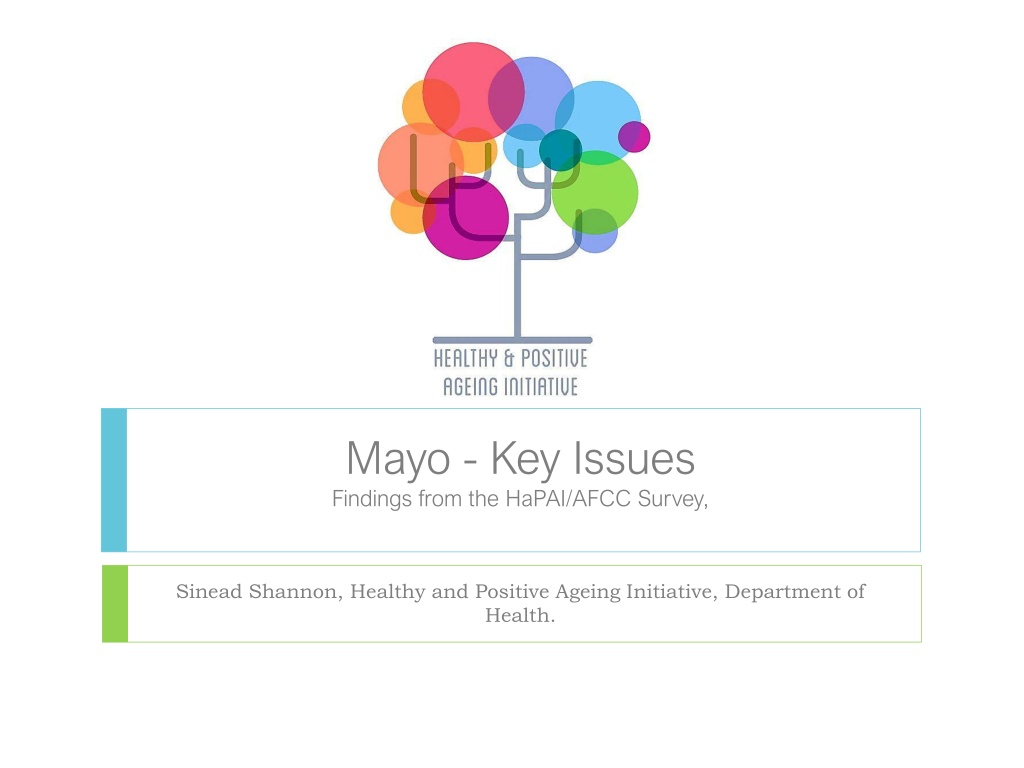
 undefined
undefined












